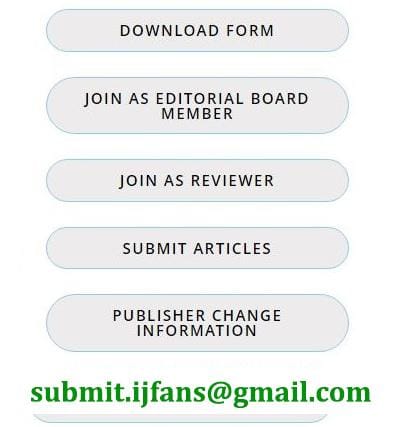
-
Investigation of Different Tea spent Waste Variants (Green Tea, Tea Dust, and Tea Granules) on the Growth and Biomass Production of Fenugreek (Trigonella foenum-graecum) for Sustainable Agriculture
Volume 14 | Issue 5
-
FORMULATION AND EVALUATION OF AN ALOE-BASED HERBAL HAIR SERUM FOR SCALP NOURISHMENT
Volume 14 | Issue 5
-
CONSUMPTION PATTERN OF ORGANIC FOOD AMONG WOMEN CONSUMERS OF PATNA SADAR
Volume 14 | Issue 5
-
Artificial intelligence in gynecologic and obstetric emergencies
Volume 14 | Issue 5
-
A NARRATIVE REVIEW ON USE OF HOMOEOPATHIC SIMILIMUM IN INATTENTIVE TYPE OF ATTENTION DEFICIT HYPERACTIVITY DISORDER.
Volume 14 | Issue 5
PREPARATION, OPTIMIZATION, AND CHARACTERIZATION OF CURCUMIN NANOEMULSION PREPARED USING GLYCERYL MONOSTEARATE AND CRODURET 40
Main Article Content
Abstract
An ultrasonication approach was employed to synthesize a Curcumin Nanoemulsion (CUNL), aiming to optimize the encapsulation and stability of curcumin nanoparticles. The synthesis process was guided by Design Expert software, which recommended the utilization of glycerol monostearate (GMS) at a concentration of 0.57 mg/ml and Croduret 40 at 0.25% as key emulsifying agents. This optimization resulted in the formation of nanoparticles with an average size of 187 nm and an encapsulation efficiency of 65.9%, indicating effective entrapment of curcumin within the nanoemulsion matrix. Characterization of the synthesized CUNL revealed a zeta potential value of -25.4 mV, which is indicative of the nanoemulsion's stability due to sufficient electrostatic repulsion between particles, preventing aggregation. The polydispersity index (PDI) was calculated to be 0.55, reflecting a moderate degree of heterogeneity within the nanoparticle population. Furthermore, the viscosity of the nanoemulsion was measured at 10.87 mPa·s, and the pH was determined to be 6.03, both parameters consistent with the desired characteristics for potential biomedical applications. Release studies of curcumin from the CUNL demonstrated a controlled and sustained release profile, with 40.2% of curcumin released after 3 hours and 75% after 24 hours, suggesting its potential for prolonged therapeutic efficacy. Transmission electron microscopy (TEM) analysis provided further insight, revealing that the Nano emulsion exhibited a globule size of approximately 87 nm, which is smaller than the size measured by dynamic light scattering, possibly due to the dehydration of the sample during TEM preparation. Fourier-transform infrared spectroscopy (FTIR) analysis of the CUNL showed spectral similarities to pure curcumin, with the predominant functional group being O-H bending at a frequency of 1528.24 cm−1. Additional spectral bands observed in the range of 2965-2855 cm−1 were attributed to the stretching vibrations of C-H bonds. The presence of functional groups such as O-C=O (2953.03 cm−1), O-H (2852.72 cm−1), and C-H (2922.16 cm−1) further corroborated the successful encapsulation of curcumin within the Nanoemulsion. This comprehensive study has demonstrated that CUNL exhibits the characteristics of a dilatant non-Newtonian fluid, confirming its potential as a stable and uniform Nanoemulsion. These findings warrant further investigation into the therapeutic and pharmacological properties of CUNL, as it shows promise as a reliable delivery system for curcumin in various biomedical applications.

